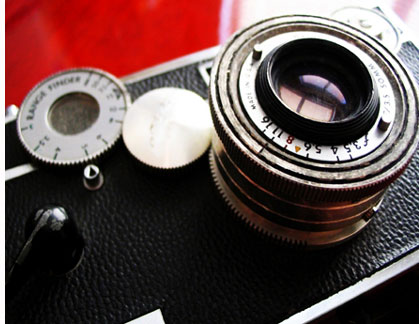ISO AND GENERAL PHOTOGRAPHY

So you're out and about shooting anything that catches your eyes; some scenics, a few candids, the odd architectural image. How should you determine which ISO to use? Schoolfotograaf explains how he considers which ISO to set when the subjects he's shooting are constantly changing.
I've been taking pictures for around 25 years now,so i have had plenty of practice when it comes to getting my head around ISO ratings! And, as anyone who learned the ropes using film will testify, the ISO ratings was so far more of a consideration then than it is today. Why? Well in the 'old days' of film photography you had to decide the ISO you were going to use before you loaded up the camera because each film had its own ISO rating. The luxury of beign able to change ISOs before each shot didn't exist. Instead you were stuck to a particular film speed for 24 or 36 frames. Looking back, this cinstraint was a great 'fast-track' method for getting to grips with ISOs, as you had to really give the ISO some thought before buying/loading your film. If i was out for the day shooting landscapes, i'd use ISO 50 or ISO 100 for the best quality, while for general photography and for flash, ISO 200 or 400 gave more flexibility. I only loaded with ISO 800 or higher when i knew that i was handholdin in low light and had no option but to sacrifice quality to get reasonably high shutter speeds.
I've carried this ISO philosophy in my schoolfotograaf and over into how i shoot digitally and have found that it works pretty well. When i want the best possible quality, i'll use as low an ISO as i can get away with and i'll only "up" the speed if there is the risk of camera shake when hand-holding the camera. That said, i'm far happier to use speeds of ISO 400-800 then i evere was with film and each new wave of DSLRs seem to raise the bar in terms of high-ISO quality. However, I'll still always try to avoid going above ISO 800, as that's when noise becomes evident and sharpness suffers.
Towardsthe end of my time with film, i found i was often using ISO 400 as my general-purpose speed as emulsions had become so good. I have to say that i've carried this working practice over to digital. The quality of ISO 400 on DSLRs is near-indistinguishable to lower speeds(unless making elargements) and the extra two stops advantage over ISO 100 are invaluable for a variety of situations, such as shooting on-the-spot portrait opportunities, or hand-held scenes on a typically muggy British day. I'll drop to ISO 100 on bright days or when using a tripod, unless this risks subject blut through movement, such as trees blowing in the wind, but usually stick to ISO 400. So, if you want the wisdom' of a couple of decades of trial and error, start out at ISO 400, drop down to ISO 100 when using a tripod or on very bright days and bump it up to ISO 800 when you're shooting in dim conditions.
This is the default style for the Zeeblio builder. It's crisp and clean and may be exactly what you're looking for. However, if you want something a bit more colorful or more similar to your specific business or personal style, click the "Styles" tab to browse our 200+ templates.